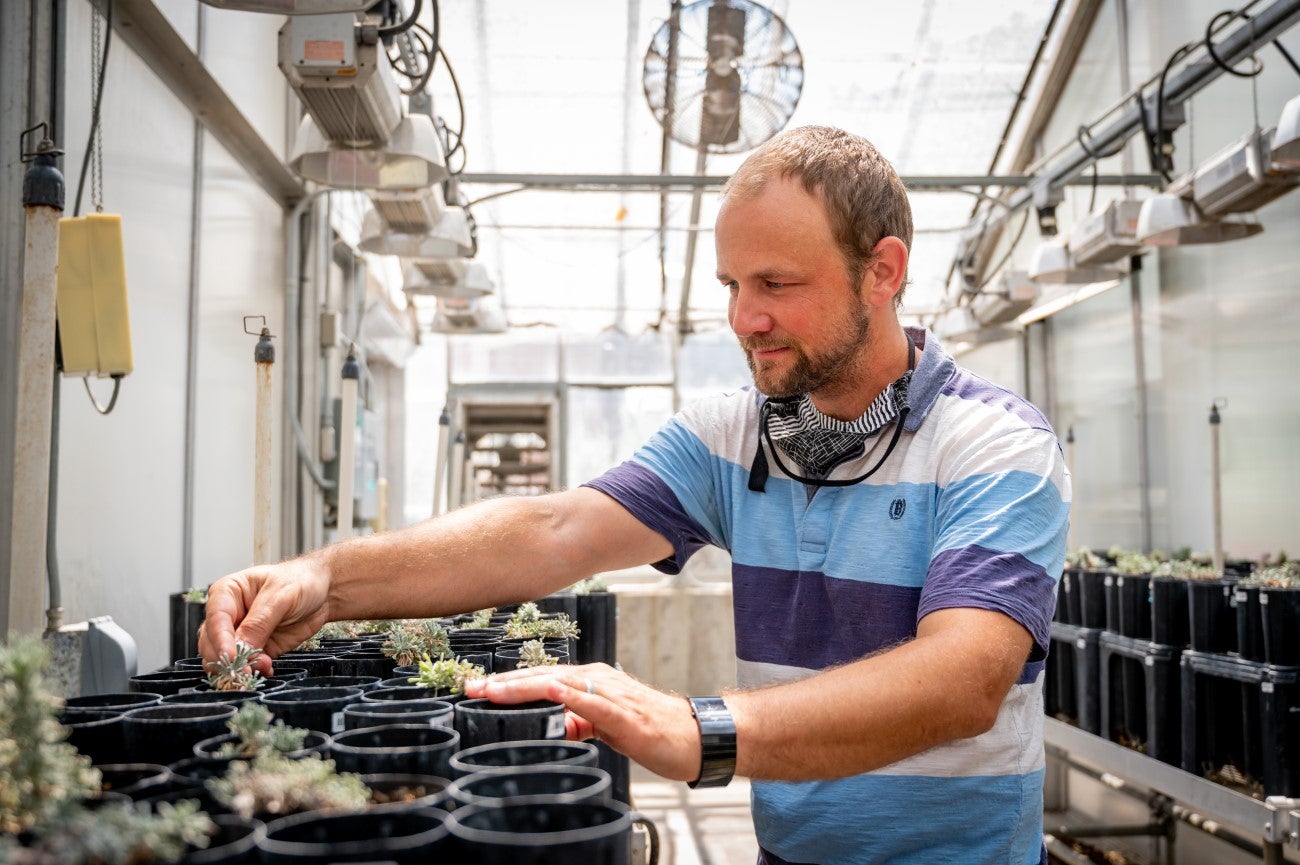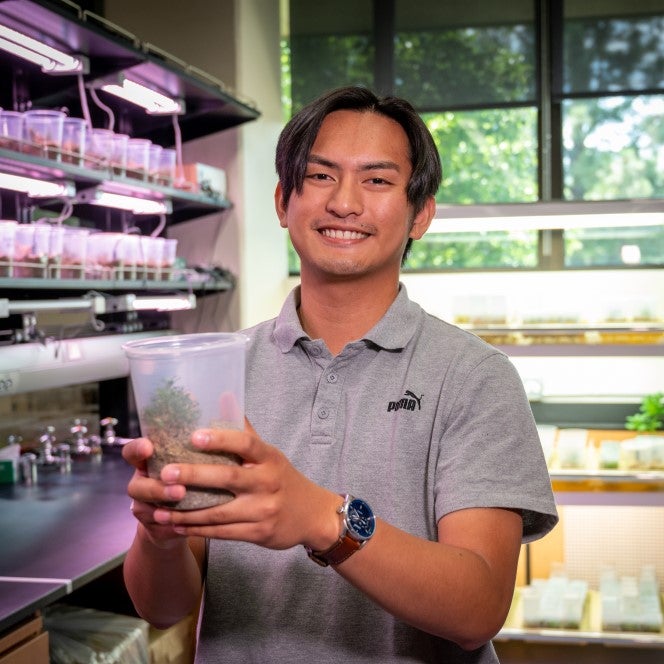
In 2003, the Human Genome Project presented the first accurate and complete human genome sequence. That “Eureka!” moment sent shockwaves through the scientific community. For the first time, humans could determine the exact sequence of base pairs in a segment of DNA. This was a pivotal moment in the race to understand human traits, genetic characteristics and diseases.
Now, after three years in the lab, Sven Buerki, an assistant professor in the Department of Biological Sciences, and fellow GEM3 researchers have accomplished the same milestone for one of the American West’s most iconic species: big sagebrush.
To put this feat into perspective, the sagebrush genome is 2.3 times larger than the human genome and far more complex due to the high genetic variability of the plant.
Sustaining the sagebrush steppe
“The sagebrush genome will act as a roadmap to estimate the effect of climate change on our ecosystem,” Buerki said.
The sagebrush steppe, a rangeland ecosystem that stretches across much of the American West, is irreplaceable for many diverse species and plays an important role in livestock grazing. By some accounts, the habitat has decreased by half from a century ago because of the spread of invasive plants and the extreme dryness, heat and wildfires caused by climate change. Sagebrush, keystone of the sagebrush steppe, is now the target of one of the largest restoration seeding efforts in the world.
Armed with the full genome sequence, researchers can better understand what genetic characteristics make sagebrush plants more resilient to drought or extreme heat. Scientists will be able to propagate seedlings with traits that can better withstand climate change, ensuring the health and sustainability of the ecosystem.
“Now, very much like with people working on the Human Genome Project, we can really understand ‘What’s the contribution of the genome in the overall fitness of a plant?’
So this sagebrush genome is a gateway allowing us now to understand adaptation,” Buerki said.
“If I have learned something during this adventure, it is that being able to assemble and annotate the complex and large sagebrush genome is evidence that the sky is the limit. This crazy achievement — considering the size and resources that we have at Boise State compared with other institutions — represents the main reason that I wanted to come to the U.S. and work with people who are forward- thinking and will support you to dream big.” (Buerki is from Switzerland and came to Boise from London where he worked at the Royal Botanic Gardens, Kew and the Natural History Museum).
Buerki’s research, based on sagebrush originating from the Owyhee Mountains of Idaho, was possible thanks to two National Science Foundation Idaho EPSCoR (Established Program to Stimulate Competitive Research) grants and a Dovetail Genomics Tree of Life Award. Collaborators included the University of Idaho; the United States Geological Survey Forest and Rangeland Ecosystem Science Center; the Royal Botanic Gardens, United Kingdom; the Institut Botànic de Barcelona, Spain; and the Rocky Mountain Research Station, United States Forest Service.
Meet Student Carlos Dumaguit

Dumaguit is a master’s student working in Buerki’s lab. He is writing his thesis on the sagebrush genome. Dumaguit has lived in Star, Idaho, since 2014. He graduated from Bishop Kelly High School in Boise, but spent his early childhood in the Philippines and Baltimore, Maryland.
He shared some thoughts about his work.
Q. What kinds of opportunities have you had at Boise State that have been particularly meaningful for you?
Boise State gave me avenues in academia that I could not have found alone. I am grateful for the Department of Psychology for starting my research journey and the Department of Biological Sciences for continuing to fund and support my learning and research work. It was Boise State that welcomed a world-class researcher, Dr. Sven Buerki, to lead groundbreaking work in bioinformatics and Boise State that started the SARE (Summer Authentic Research Experiences) that engage undergraduates in STEM research related to GEM3 projects and VIPs (Vertically Integrated Projects) that let students work alongside faculty members pursuing ambitious projects.
Q. What has it been like for you to work on a project like this that has such significance for all of us who love the sagebrush steppe?
Growing up in Boise, I was ambivalent about the desert and its plants. But through my classes and research, I came to know how important sagebrush is to our whole ecosystem. That’s in sharp contrast to having heard many people calling sagebrush a ‘nuisance’ in the Treasure Valley. Contributing to this research means I have a hand in ensuring that future generations get to experience the great outdoors of Idaho that I have come to adore. It is incredible to know that my work in conservation genomics can potentially have impacts all over the world.
GEM3
27 Buerki’s research is one of several GEM3 projects taking place at Boise State, University of Idaho and Idaho State University. GEM3 (Genes by Environment, Modeling, Mechanisms, Mapping) is a $20 million National Science Foundation initiative to discover how genetic mechanisms predict organisms’ adaptations to changing environments. The research will inform natural resource management. Projects at Boise State focus on sagebrush and red band trout, as well as diversity and workforce development.
By Brianne Phillips
